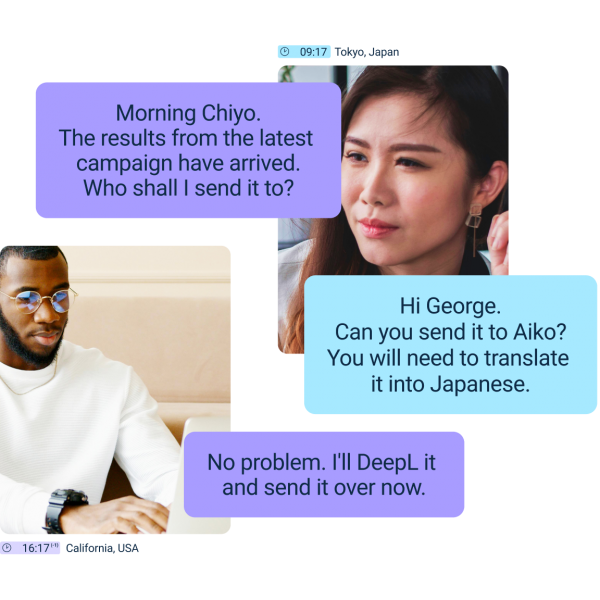 AI
AI
 AI
AI
 AI
AI
DeepL SE, a well-funded translation software startup that leverages customized artificial intelligence models for improved accuracy over traditional platforms, has announced the debut of its most powerful AI model yet.
The startup’s next-generation language model is said to be designed specifically for translation and editing tasks. It’s based on a highly specialized large language model that’s fine-tuned on enormous amounts of proprietary language data. The company says the LLM provides more “human-like translations” with a reduced risk of hallucinations and misinformation.
The new model’s skills were enhanced via a human model tutoring process that involved thousands of handpicked language experts, who were hired to “tutor” the model to ensure the accuracy of its translations.
Germany-based DeepL has emerged as a rival to better-known translation systems such as Google Translate and general-purpose AI models such as ChatGPT, which can perform translations as part of a much wider repertoire of skills. Because DeepL’s systems are laser-focused on translating and creating business content, the company claims its models provide much more accurate and precise translations for enterprises.
The company’s platform supports 32 languages, with recent additions including Arabic, Korean and Norwegian.
DeepL explained that when it comes to business translation and writing, accuracy is of paramount importance because any mistakes can have an adverse effect on a company’s reputation. That’s why more businesses are turning to specialized AI models, it says.
The company is targeting the thousands of enterprises worldwide that operate globally, and are faced with a linguistic divide across regions. Those companies have an urgent need to translate internal business communications, marketing materials and other messaging and they need to do it swiftly.
That urgent need explains why DeepL was able to close on a bumper $300 million funding round in May, bringing its post-money valuation to more than $2 billion.
DeepL has wasted little time in putting that money to work. It says its new model provides a significant improvement over its previous-generation translation systems.
In blind tests involving professional linguists, DeepL said the latest LLM demonstrated an impressive 1.7-times greater accuracy than its predecessor model for translations of English to Japanese, English to Simplified Chinese and Japanese to Chinese. It also showed 1.4-times superior performance with English and German translation. The company says these improvements mean its customers will be able to spend much less time on editing translated content.
DeepL also tested the new model against popular translation tools such as Google Translate and found that language experts preferred its model to the latter 1.3 times more often. They also showed a 1.7-times preference for DeepL compared with ChatGPT-4.
Stefan Mesken, vice president of research at DeepL, said the tests also showed that professional translators had to make twice as many edits of content translated by Google Translate, and three times more edits for content translated using ChatGPT, when compared with the company’s new LLM.
“For businesses who translate a large volume of documents, this truly impacts their efficiency and productivity, meaning team members can focus on tasks with high-business value,” he promised.

Holger Mueller of Constellation Research Inc. said if there is one area where AI has already proven to be transformative, its the business of language translation. “AI translation services are widely used and they have had a profound impact on both business and personal lives,” Mueller said.
The analyst said AI translation providers no longer need to prove the effectiveness of their services, but rather, are now racing to come up with more accurate models that can reduce errors and those occasional instances where the translated sentences cause confusion. “DeepL looks extremely promising, with its latest model showing results that beat Google Translate, the industry leader,” Mueller said. “The challenge now is for DeepL to get its model in front of more users.”
The startup said its next generation model is available now for DeepL Pro customers for translations in English, German, Japanese and Simplified Chinese, with additional language support on the way. Customers can activate the new LLM within its web-based translator by selecting the “next-gen model” from a drop-down menu. The company reassured Pro customers that none of their translations will be used to train its models.
The launch of the new model comes hot on the heels of DeepL for Enterprise, a new version of its platform aimed at businesses seeking to integrate AI solutions.
DeepL founder and Chief Executive Jarek Kutylowski said the latest release is only a sign of what is to come from his company. “We are a research-driven company to our core and are investing heavily in pushing the boundaries of translation and writing quality, efficiency and adaptability,” he said.
THANK YOU